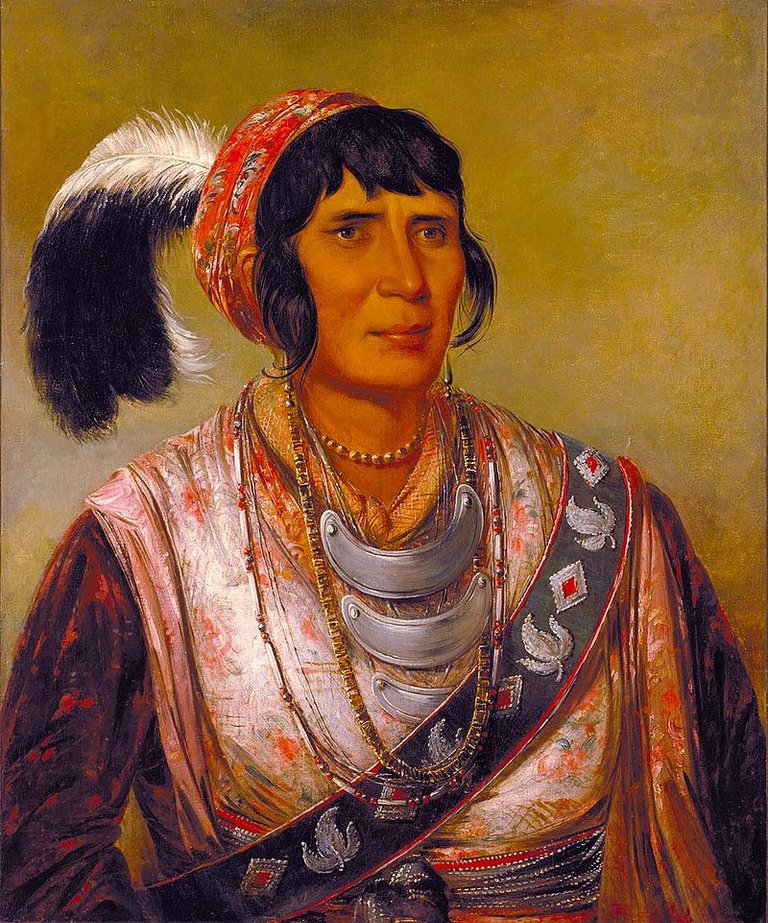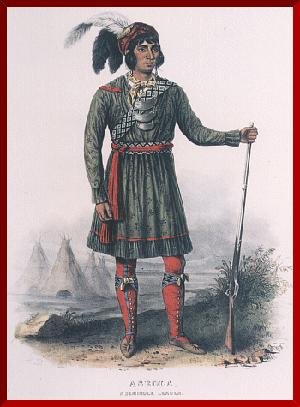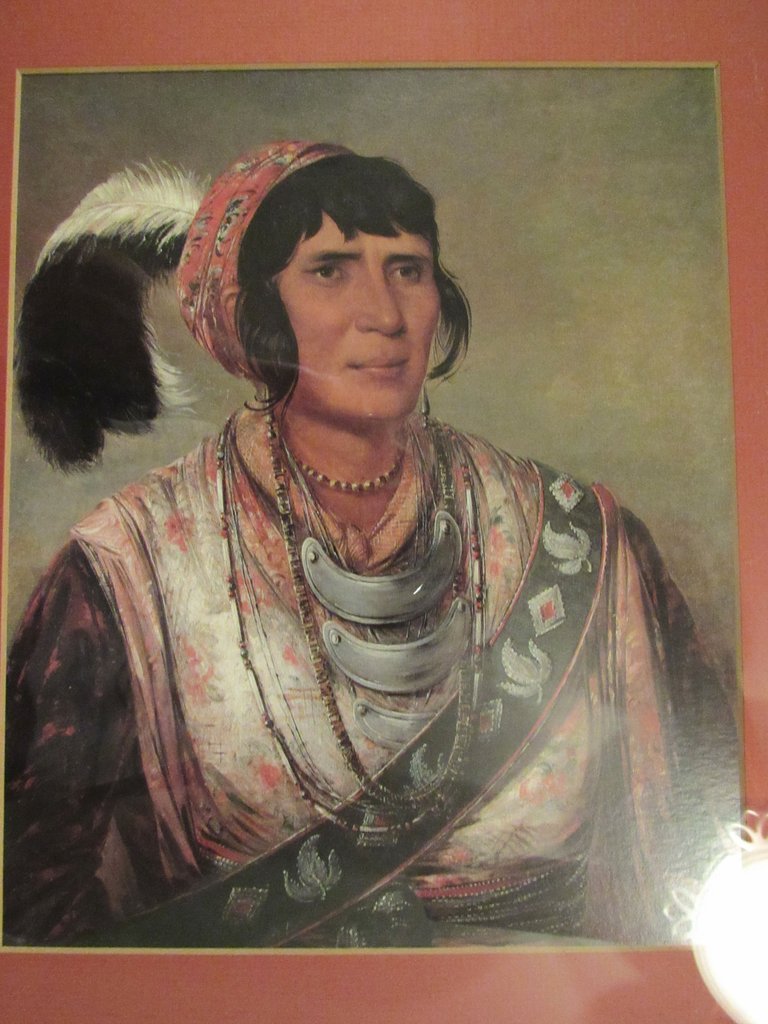Also Known as Billy Powell, Osceola was a great leader to the Seminole Indians in Florida during the Seminole Wars which began in 1830. He led his people in revolt against the U.S. Government, which had invaded the natives of Florida as early as 1817, when General Andrew Jackson burned villages and attacked the Seminoles.
 Osceola, Seminole Warrior (photo from wikimedia commons)
Osceola, Seminole Warrior (photo from wikimedia commons)
Osceola was born in 1804 in the Creek Indian village of Talisi Tallassee, Alabama. His mother was a Creek named Polly Copinger and his father was William Powell, an English trader. The Red Stick Creeks, as they were called, were attacked and burnt out by General Andrew Jackson in 1814. The remaining Creeks, including Osceola and Polly fled to Florida. 1815 found Osceola living with the Seminoles of Florida, which was still under Spanish rule. Florida had become a sanctuary for Indians on the run, fugitives, runaway slaves, smugglers, pirates and the like. Four years later in 1819 the Florida Treaty was signed, making Florida part of the United States. The Spaniards were paid five million dollars for all of Florida.
General Jackson’s relentless attacks on the Seminoles continued in 1823 when the U.S. seized all their land in the northern part of the state.

Wikimedia commons
The Indian Removal Act was passed by Congress in 1830, beginning the removal by force of Native American Indians from their lands to reservations. Just two years later in 1832 the Treaty of Payne’s Landing gave all Seminoles three years to leave Florida and relocate to Indian Territory. (present day Oklahoma)
By this time Osceola had risen to become the leader of the Seminole resistance movement against the forced relocation of him and his people. The natives began to revolt in a major way. In December of 1835, Osceola led an ambush on a column of 110 U.S. Army troops, killing them all in what was later named the Dade massacre. Five days later they ambushed and killed Army General Wiley Thompson, along with six other officers at Fort King. These attacks by Osceola began the Second Seminole War.
The war had a devastating affect on Florida, so severe that in the year of 1836 there was only one house left standing in all of the area now known as Miami-Dade and Broward counties! Osceola had to be stopped.
In 1837 U.S. Army General Thomas Jesup devised a plan: they would arrange peace talks with Osceola and if he showed up he would be captured. The plan worked, and on October 20, Osceola was taken prisoner and eventually sent to Sullivan’s Island, South Carolina that December.
Author's reproduction of George Catlin's portrait of Osceola
It was there at Fort Moultrie, on Sullivan’s Island right outside of Charleston, S.C., where American artist George Catlin painted this portrait of Osceola. That was in January of 1838, and on January 30 Osceola was found dead at the Fort. There is a shroud of mystery over his death, and the exact cause is unknown. It is believed that he either died from quinsy, suicide, or was poisoned.
There can be no mystery or denial in the fact that Osceola was a great leader and defender of his people. His death was reported on front pages around the world, he had become the most famous Native American in 1838.
After Osceola’s capture, Seminole Medicine Man Abiaka took over as leader of the resistance, and fought the U.S. Army for twenty more years. When the last of the wars concluded in 1858, Abiaka was the only Seminole leader left in Florida. He had pockets of resistance fighters in the swamps consisting of two to three hundred men. They never gave up, never signed a peace treaty with the Government, and to this day have remained an independent nation. Today over two thousand Seminoles live on six reservations in Florida.
Note: I have in my possession a reproduction of George Catlin’s portrait of Osceola (see pic), purchased at the Smithsonian Art Museum in Washington, D.C. sometime around 1980 by my father-in-law. He gifted the portrait to my wife and I shortly after we were married in 1991. He gave us two portraits by George Catlin, this one and another of Sauk Indian Chief Keokuk, the subject of my next story.
If you would like to read more about Osceola and the Seminole Indians, there are these books currently listed on Amazon: (affiliate links)
Disclosure: I am an Amazon Associate, a.k.a. affiliate, therefore if you were to click one of the Amazon links above and actually make a purchase, I receive a tiny percentage as a referral fee, or commission.










"I'm from the United States Government and I'm here to help you...trust me."
It seems that some of our "great forefathers" weren't so great after all, huh? The atrocities against Native Americans by the U.S. Government are despicable. The trail of tears.
feet of clay
Excellent post Scott! I too am a serious student of history and take great pleasure in searching out as much information as possible on places I visit. Thanks for posting it!
You got a 2.94% upvote from @upmyvote courtesy of @scottrogers63!
If you believe this post is spam or abuse, please report it to our Discord #abuse channel.
If you want to support our Curation Digest or our Spam & Abuse prevention efforts, please vote @themarkymark as witness.
Resteemed by @resteembot! Good Luck!
Curious? Read @resteembot's introduction post
Check out the great posts I already resteemed.
ResteemBot's Maker is Looking for Work.
This post received a 1.050 SBD (17.64%) upvote from @upvotewhale thanks to @scottrogers63! For more information, check out my profile!
Follow me for upvotes | Send 0.200 Steem or 0.200 SBD and the URL in the memo to use the bot for a resteem and to get over 5 upvots
This post was resteemed by @steemvote and received a 7.44% Upvote